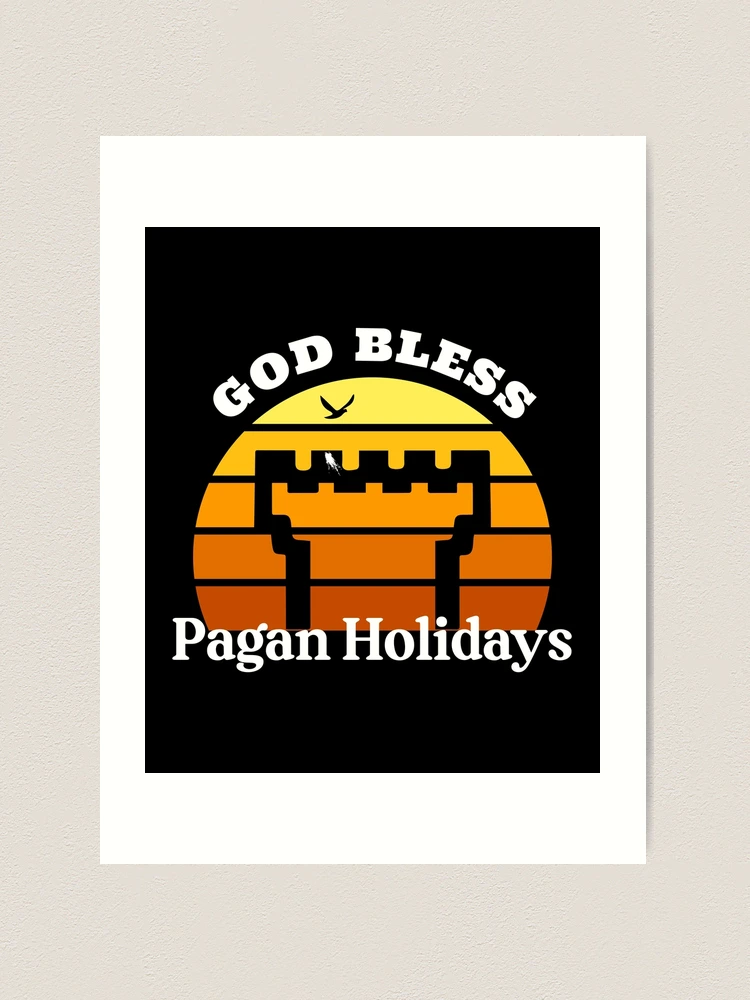Pagan holidays are celebrations or festivals that have their origins in pre-Christian religions and belief systems. Many modern holidays and traditions have roots in pagan customs and rituals that date back thousands of years. Understanding the history and meaning behind some of these holidays can be fascinating.

This article will provide an overview of some of the major pagan holidays that are still celebrated today in various forms, as well as delve into the origins, symbolism, and evolution of these ancient festivals over time. Potential audiences who may find value in this article include:
- History buffs interested in the origins of modern holidays
- Pagans and members of neo-pagan religions
- Anthropology students studying ancient belief systems and their ongoing cultural impacts
- Anyone curious to learn more about the celebrations they take part in each year
Ancient Origins and Meanings
Many pagan holidays corresponded to important dates and events in the agricultural calendar. Ancient pagans celebrated festivals to mark planting and harvest times, the solstices and equinoxes, and the perceived death and rebirth of nature each year. These celebrations honored gods and goddesses associated with fertility, the sun, the moon, and the natural world.
Yule
Yule takes place around the winter solstice, which falls between December 20-23 each year. Ancient Germanic and Scandinavian pagans celebrated Yule to mark the rebirth of the sun god after the winter solstice, as the days would slowly start to grow longer again. Symbols and practices associated with Yule include lighting fires and candles to welcome back and strengthen the sun, burning a Yule log, and decorating with evergreens like holly and mistletoe as signs of enduring life through winter.
Imbolc
Taking place on February 1st or 2nd, Imbolc marked the beginning of spring for Celtic pagans. It was seen as a time when the earth awakens and new life begins to grow. Imbolc celebrations honored the Celtic goddess Brigid and involved lighting candles and fires to welcome back the sun’s warmth and burning winter vegetation to clear the way for spring planting.
Ostara
Ostara is a spring equinox festival celebrated by Germanic pagans and modern neopagans. It takes place around March 21st and symbolizes the renewal and rebirth associated with spring. Pagan traditions around Ostara involve decorating eggs as symbols of fertility and rebirth, as well as planting seeds and holding celebrations to honor the goddess Eostre, who Ostara (or Easter) is named after.
Beltane
Marking the midpoint between spring and summer, Beltane has origins in ancient Celtic paganism. It is traditionally celebrated on May 1st with rituals and customs focused on fertility, fire, purification, and protecting livestock through the summer. Beltane practices have included lighting bonfires, dancing around Maypoles, leaving milk and bread offerings outdoors for spirits, and adorning homes and bodies with fresh greenery to welcome in the lushness of summer.
Evolution and Modern Celebrations
While pagan in origin, many of these ancient holidays have evolved and taken on new meanings over time. As Christianity spread through Europe, the church sought to replace existing pagan festivals with Christian ones as part of conversion efforts. But many customs, symbols, and practices endured in adapted forms.
Christmas
Many Yule traditions were incorporated into Christmas over the years. While Christmas celebrates the birth of Jesus Christ and the Nativity story, the use of evergreens, gift giving, feasting, burning the Yule log, and emphasis on spreading light and joy during the darkest time of year hearken back to pagan Yule rituals.
Easter
As Christianity began to displace pagan religions, the spring equinox festival of Ostara became adopted as Easter, celebrating the resurrection of Jesus instead. However, Easter retained symbols of rebirth and fertility like eggs and bunnies, as well as the name of the pagan goddess it once honored – Eostre.
May Day
The Celtic pagan holiday of Beltane evolved into May Day celebrations across Europe. While not a religious holiday anymore, it retains the pagan associations of welcoming spring, fertility, flowers, and community. Maypole dancing derives from ancient Beltane rituals.
Halloween
Halloween originated from Samhain, an ancient Celtic pagan festival marking summer’s end and the start of winter. While seen as the beginning of a dark time, it was also thought to be when the veil between the spirit world and human world was at its thinnest. Modern Halloween retains pagan elements like wearing costumes to scare away spirits, carving jack-o-lanterns from turnips, and focusing on the macabre.
Many of today’s holiday celebrations and traditions can trace their origins back to ancient pagan festivals and beliefs. Understanding their history and symbolism sheds light on the ongoing influence of paganism in modern culture. These pagan-rooted holidays represent the enduring human need to come together during significant times of the year, find reasons to celebrate, and maintain hope even through life’s inevitable cycles of darkness and light.



